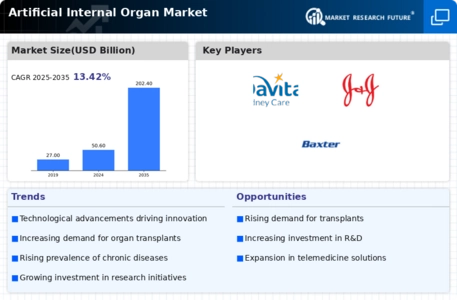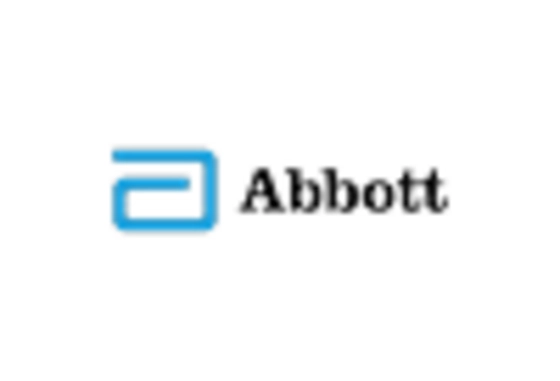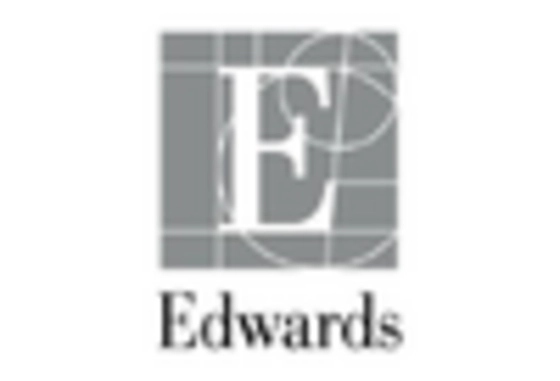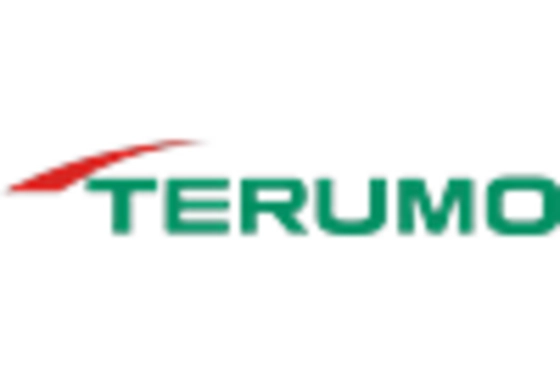Rising Prevalence of Chronic Diseases
The increasing incidence of chronic diseases such as diabetes, heart disease, and renal failure is a primary driver of the Artificial Internal Organ Market. As these conditions become more prevalent, the demand for organ replacements rises correspondingly. According to recent statistics, chronic diseases account for approximately 70 percent of all deaths worldwide, highlighting the urgent need for effective treatment options. This trend suggests that the market for artificial organs will continue to expand, as patients seek alternatives to traditional organ transplants. The Artificial Internal Organ Market is thus positioned to grow significantly, driven by the necessity for innovative solutions to manage these chronic health issues.
Technological Innovations in Medical Devices
Technological advancements in medical devices are transforming the landscape of the Artificial Internal Organ Market. Innovations such as 3D printing, biocompatible materials, and advanced robotics are enabling the development of more effective and reliable artificial organs. For instance, the introduction of bioengineered organs has shown promise in mimicking the functions of natural organs, potentially reducing the need for donor organs. The market is projected to witness substantial growth, with estimates suggesting a compound annual growth rate of over 15 percent in the coming years. This technological evolution not only enhances the performance of artificial organs but also expands their applications, thereby driving market expansion.
Aging Population and Increased Life Expectancy
The aging population is a significant factor influencing the Artificial Internal Organ Market. As life expectancy continues to rise, the incidence of age-related diseases increases, leading to a higher demand for organ replacements. It is estimated that by 2030, the number of individuals aged 65 and older will reach approximately 1.5 billion, creating a substantial market for artificial organs. This demographic shift indicates a growing need for innovative solutions to address the health challenges associated with aging. Consequently, the Artificial Internal Organ Market is likely to experience robust growth as healthcare systems adapt to meet the needs of an older population.
Increased Investment in Healthcare Infrastructure
Investment in healthcare infrastructure is a crucial driver of the Artificial Internal Organ Market. Governments and private entities are allocating significant resources to enhance healthcare facilities and technologies, which includes the development of artificial organs. This trend is particularly evident in emerging economies, where healthcare systems are rapidly evolving. Enhanced infrastructure facilitates better access to advanced medical technologies, thereby increasing the adoption of artificial organs. The market is expected to benefit from this influx of investment, as improved healthcare systems are likely to lead to higher demand for innovative solutions in organ replacement.
Growing Awareness and Acceptance of Artificial Organs
The growing awareness and acceptance of artificial organs among patients and healthcare providers is a vital driver of the Artificial Internal Organ Market. Educational initiatives and successful case studies are helping to demystify artificial organ technologies, leading to increased patient confidence in these solutions. Surveys indicate that a significant percentage of patients are open to considering artificial organs as viable alternatives to traditional transplants. This shift in perception is likely to enhance market growth, as more individuals seek out artificial organ solutions for their health needs. The Artificial Internal Organ Market stands to gain from this trend, as acceptance translates into higher demand.

















Leave a Comment